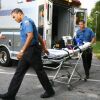A user on Quora recently asked, “How hard is EMT training?” A few answers stood out to us, especially one by founder and executive director of Allied Medical Training named Sean Ewen. You can read his reply below:
I suspect the greater concern at the root of your question is, “how likely is it I will succeed and become a certified EMT?” If your EMT training is challenging (and you rise to that challenge), it’s actually more likely you will succeed. If EMT training seems easy, you are either a brilliant student with some background in science and health care or your training program is not adequately preparing you to pass your certification exam.
To validate the advice I’m giving — I have been running an EMT training program for seven years. Our methodology is different than most other training programs, but results in a graduation rate of nearly 100 percent and a first time pass rate on the NREMT certification exam of over 90 percent (versus national average of only ~70 percent).
How to succeed in EMT training
Here are some keys to success:
1. Read and study the textbook diligently
The textbook is usually about 1,000 pages (but to be fair does have a lot of diagrams and pictures). YOU REALLY DO NEED TO READ AND STUDY IT ALL. The textbook is the foundation of your learning which the training program should expand upon in its presentations and practical skills training.
2. Consistent studying every week - DON’T CRAM
This is crucial. You really can get through a 1,000-page textbook in a few months if you consistently work on a few chapters every week. Utilize active learning techniques such as taking notes, making flashcards, quizzing with a friend or family member, etc.
3. Use a strategy for answering medical-style multiple-choice questions
Many students are unprepared for how to analyze the test questions in EMT class, which are not all just straightforward knowledge recall questions. I published an article and presentation about this here.
4. You are given a copy of the practical skills exam in advance - Use this to your advantage
The NREMT practical skills exam consists performing steps outlined in several skill sheets that you should receive your first day of class. They are also available publicly here (click on the psychomotor tab). Practice, practice, practice these skills until they are memorized.
5. Be prepared to push your interpersonal skills
Succeeding in EMT class and as an EMT in the field is more than just knowing things. It requires tactful and professional communication with patients who are often in significant distress as well as with other health care professionals. You must start working on these skills during EMT class. If you are normally a very reserved person, then be prepared to push yourself out of your comfort zone.
6. You don’t need a background in science
A good training program will thoroughly explain the fundamentals behind physiology to you. The goal of EMT training is for you to be able to recognize the potential and likelihood of life-threatening illness and injury, and begin initial interventions before the patient reaches definitive care at the hospital.
Do your research when picking a training program - it will make a world of difference in your ability to succeed. Ask them for their graduation rate and NREMT cognitive exam pass rate. See how long it takes them to return your voicemail or email (this may give an indication to how responsive they’ll be during the course). If possible, corroborate your research with actual student reviews and recommendations from people you know.
Additional resources for EMT training:
Check out these articles related to EMT training and take a deeper dive into the profession:
- Want to become an EMT? This is what you need to know
- 5 ways to enhance your EMS career prospects
- Live to remote: 5 ways to make the training transition
- 4 EMT tips to first do the right things, then do things right
- Joining EMS? Here’s what you’re really getting into...
- How to keep your EMT certification current
- 5 steps to an accurate phsyical exam
This article, originally published on July 31, 2017, has been updated.



